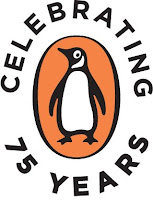Weekend Cooking: Grilled Pizza
 Weekend Cooking is open to anyone who has any kind of food-related post to share: Book (novel, nonfiction) reviews, cookbook reviews, movie reviews, recipes, random thoughts, gadgets, fabulous quotations, photographs. If your post is even vaguely foodie, feel free to grab the button and link up anytime over the weekend. Please link to your specific post, not your blog's home page. For more information, see the welcome post.
Weekend Cooking is open to anyone who has any kind of food-related post to share: Book (novel, nonfiction) reviews, cookbook reviews, movie reviews, recipes, random thoughts, gadgets, fabulous quotations, photographs. If your post is even vaguely foodie, feel free to grab the button and link up anytime over the weekend. Please link to your specific post, not your blog's home page. For more information, see the welcome post.
 I finally remembered to make pizza and take photos at the same time. It was an interesting experiment because Mr. BFR was not home during the grilling procedure, and I had to do a lot of tasks all at once. Plus the grill gets really hot, so it's not easy to get good photos. Oh well, I did my best.
I finally remembered to make pizza and take photos at the same time. It was an interesting experiment because Mr. BFR was not home during the grilling procedure, and I had to do a lot of tasks all at once. Plus the grill gets really hot, so it's not easy to get good photos. Oh well, I did my best.I use a dough recipe from Lora Bordy's Pizza Focaccia, Flat and Filled Breads (William Morrow, 1995), and I more or less follow the grilling instructions published in a King Arthur Flour Baking Sheet a couple of years ago.
I make the dough in my bread machine, use my hands to form rustic pizzas, and grill them on my gas grill. I line half my grill with unglazed quarry tiles for finishing the pizzas. To see any of the photos full size, click on the image.
Pizza Dough
- 3 cups all-purpose flour

- 1/4 cup coarse-ground cornmeal
- 2 teaspoons salt
- 2 tablespoons olive oil
- 1 cup water (and a bit more if necessary)
- 2 teaspoons yeast
Forming Crusts and Initial Grilling
- Olive oil for brushing
 Just before the dough is ready, line one half of your grill with unglazed quarry tiles and heat the grill on high, using all three burners.
Just before the dough is ready, line one half of your grill with unglazed quarry tiles and heat the grill on high, using all three burners.When the dough is ready, place it on a lightly floured surface and divide it into two or three equal balls. I make three pizzas out of this recipe because I like a thin crust. Put two balls of dough aside and cover with a tea towel. Sprinkle your peel with a bit of cornmeal.

Stretch out the the dough until it is the thickness and size you like. I make about a 10½-inch pizza because it fits my grill, peel, and tiles. Place the dough on your peel and brush the top of the dough with olive oil. Take the pizza to your grill, lay the peel on the tiles and then pick up the dough and place it, oil side down on the grill (remove the peel from the grill).
With the lid open, let the dough cook for 30 seconds. Take a spatula or your peel and rotate (do not flip) the d
 ough 90 degrees. Then brush the top with olive oil and let the dough cook for 1 minute. Using a spatula or your peel, pick the dough up, flip it, and let it grill for 1 minute. Remove the crust from the grill without flipping it and transfer to a rack.
ough 90 degrees. Then brush the top with olive oil and let the dough cook for 1 minute. Using a spatula or your peel, pick the dough up, flip it, and let it grill for 1 minute. Remove the crust from the grill without flipping it and transfer to a rack.Repeat for the other crusts.
Making the PizzaClose the lid on the grill to retain the heat.
Sprinkle your peel with some cornmeal, and place a crust on it, without flipping the crust. In other words, the side that was cooked for 1½ minutes should be facing up.
Spread on tomato sauce. Place your toppings. Top with cheese. Try not to go crazy with the cheese, otherwise the crust may get too dark before the cheese has melted. Or you can try turning down your grill.
 Take your peel back to the grill and slide the pizza onto the hot quarry tiles. Close the lid and bake until the cheese has melted. This takes anywhere from 4 to 10 minutes depending on the temperature of your grill.
Take your peel back to the grill and slide the pizza onto the hot quarry tiles. Close the lid and bake until the cheese has melted. This takes anywhere from 4 to 10 minutes depending on the temperature of your grill.Repeat with your other crusts (I have two peels so I can cook the pizzas fairly quickly). Enjoy!
For pizza night this week I made a fresh basil and garlic pizza, a grated
 summer squash and hot pepper pizza, and an onion and black olive pizza. The basil was the winner for taste and the other two tied at a close second.
summer squash and hot pepper pizza, and an onion and black olive pizza. The basil was the winner for taste and the other two tied at a close second.We have had a few different grilling techniques featured for Weekend Cooking this summer. Please share your own if you haven't yet done so.
Click for more
















































